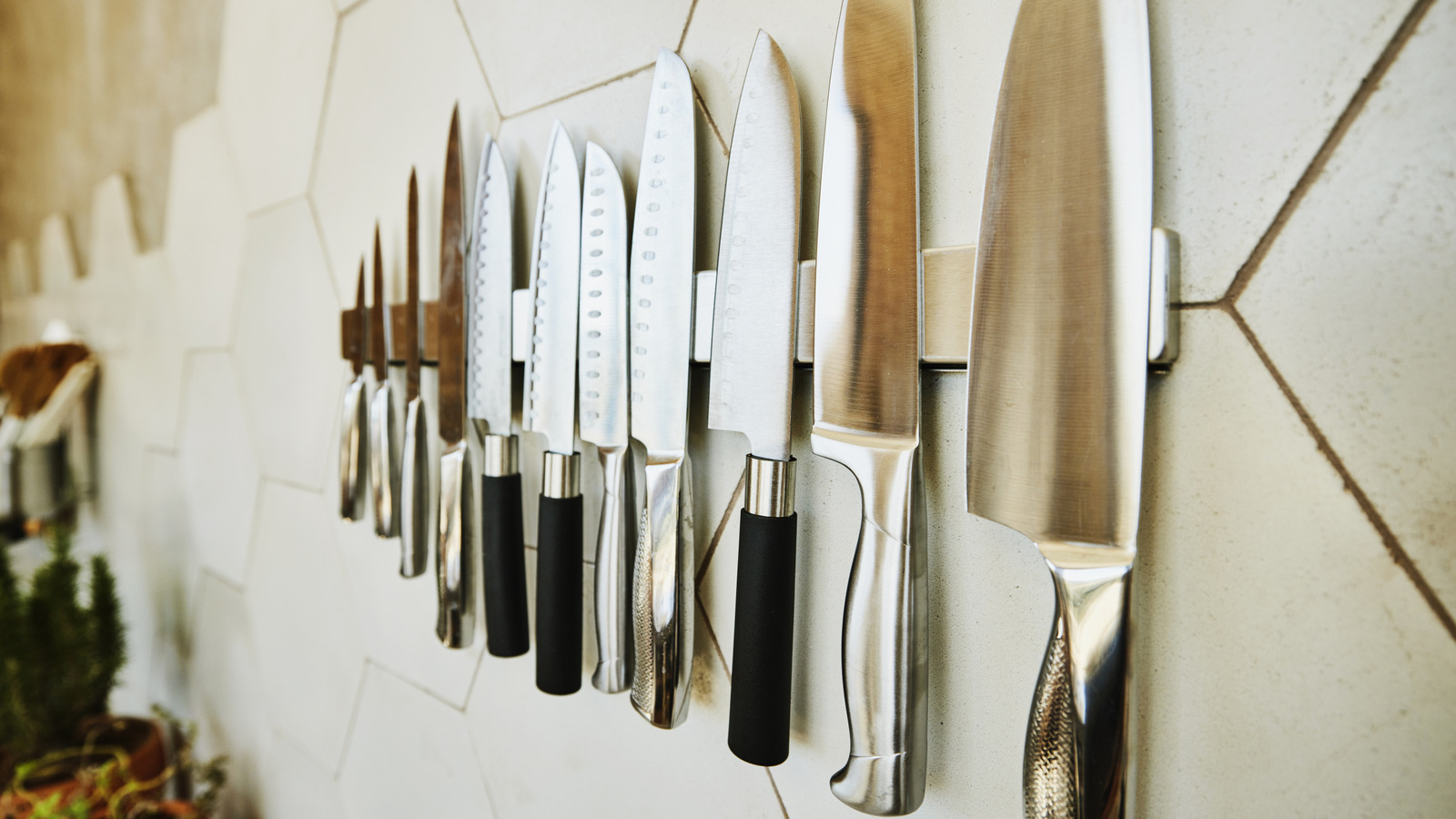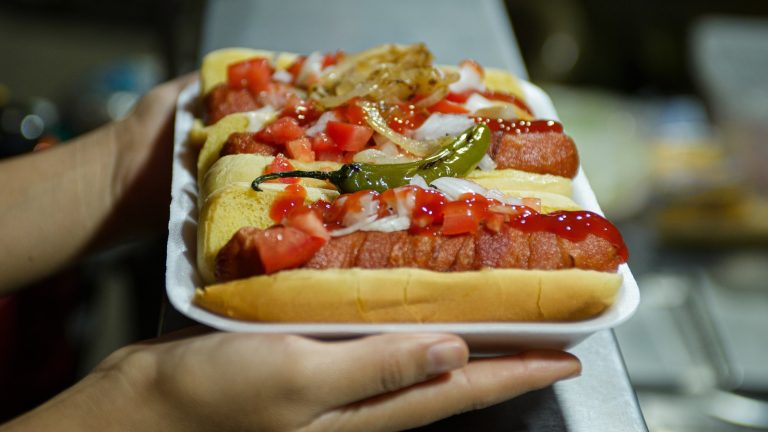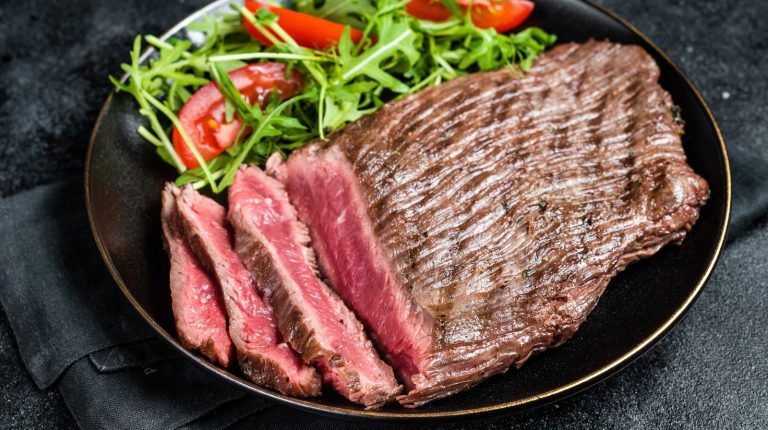If you’re more of a diner than a chef, your idea of kitchen knives may only extend to butter knives and dinner knives. However, the ultimate guide to kitchen knives is extensive. It’s easy to feel like you need to go out and buy lots of premium knives if you want to prepare food properly, but this isn’t quite true. If you need guidance, you can start with a few affordable options, including some recommendations from celebrity chef Geoffrey Zakarian. A judge on “Chopped” and a co-host of “The Kitchen,” Zakarian spoke exclusively with Chowhound to help promote the City Harvest charity’s Summer in the City event, which raises money to feed New Yorkers in need.
Zakarian believes a beginner chef’s knife drawer should have a serrated knife, a chef’s knife, a boning knife, a paring knife, and a heavy butcher knife. According to Zakarian, each has a different purpose: “You need a serrated knife for bread and tomatoes, a long serrated knife. You need a 12-inch chef’s knife, you need a boning knife. You need two or three paring knives because they get beaten up and lost fast. And then you need a heavier knife like a butcher knife for chopping like a cleaver.” He also recommends keeping it cheap — no more than $100 for the full set.
A chef’s knife
Your most important knife is what’s commonly called a chef’s knife. This knife is easily recognizable by the shape of its blade, which is extremely wide by the handle and gradually shrinks and tapers off to a sharp point at the tip. On average, these knives are about 8 inches in length, although they come in smaller or larger sizes such as the 12-inch style Zakarian recommends.
It’s a general purpose knife with no niches or specialties, but it’s great at dicing and chopping straight through most vegetables and fruits. When laid flat, the blade is wide and sturdy enough to crush foods such as garlic without you needing more specialized equipment. If you do spend a bit of extra money on your starter knives — again, don’t feel as if you need to — a chef’s knife would be the one knife home cooks should splurge on. In most cases, if you’re pulling out a cutting board, your chef’s knife should be well-suited for whatever’s on it.
A smaller serrated bread knife
Moving away from the heavy stuff, you should consider a serrated knife of some sort (sometimes called a bread knife). They’re known for their jagged, saw-like edges that can hold a tough crust or rind in place while the blade slices through them. Zakarian recommends them for chopping bread and tomatoes, but they’re also useful for cutting into foods with hard surfaces but soft insides, such as pies and sausages. While they can chop foods, a decent bread knife should saw cleanly through food without you needing to press down very hard.
Unlike other knives, which can be sharpened often on whetstones, it’s difficult to sharpen each individual point on a serrated knife edge. Instead, a starter serrated knife may be more replaceable, and should be bought cheaper as a result. How long your bread knife lasts depends on the knife and how much use it sees, so check on it sometimes to see if its shark-like teeth are growing dull.
Some replaceable paring knives
Next is the paring knife, although Zakarian suggests getting a couple because they’re tiny enough to easily get lost. Paring knives are often some of the smallest knives in your collection, with blades just a few inches long. They’re used when you want precision while peeling the skins off vegetables, mincing garlic, or chopping up small fruits such as strawberries. They’re also your go-to knife if you’re slicing up cheese cubes; if you’re trying to build a better charcuterie board, a paring knife is precise enough to cut each piece of cheese evenly.
Typically, they’re a little small to be working with heavy meats, although they can be used for light trimming. Paring knives can also be used for deveining shrimps or prawns with ease. Despite their size and lack of strength, paring knives are considered essential because of how much control you have over their movement.
A thin and sharp boning knife
When you’re trying to chop up meats with the bones still inside, a regular chef’s knife may not cut it; you need a boning knife. A boning knife is rather small, but much stronger than it looks. It’s got a thin shape which expands slightly around the handle and an especially sharp tip that’s great for creating an opening to break into a piece of meat. As the name suggests, this is the knife you use for cutting meat cleanly off the bone.
These thin, slender knives are designed for precisely cutting and maneuvering inside of tough meats and cartilage, although you should never try cutting through the bones themselves. Instead, use boning knives to slice the meat off around the bones, such as filleting a fish or cutting around chunks of fat and tendons. There are specialized fillet knives out there, but you’re just starting out; a boning knife suffices.
A heavy butchering knife
You don’t want boning knives for chopping up tough pieces of meat. If your goal is to separate a large chunk of meat into smaller chunks, you want a butcher knife. These rigid, strong blades are well-suited to carving and slicing meats; they can also saw into thick meats in a similar manner to how a bread knife can saw through bread and fruits. Their lightly curved shape is well-designed for cutting underneath the skin of meats and performing precise maneuvers, even if they’re less precise than a paring knife.
Butcher knives are somewhat similar to cleavers, which have giant square blades. Those are often used for cutting heavier meats, but they’re more cumbersome to wield. Chefs with larger knife collections often include both a butcher knife and a cleaver, but if you’re just starting out, Zakarian’s advice is a simple butcher knife should be all you need for those heavy-duty dinners. Over time, you might go for more specialized knives. However, according to Zakarian, he still usually sticks to a few favorites: “I have 250 knives in my knife drawer since I’ve been collecting for so many years, and probably I use five, because I go to the same one. It’s so beaten up, it looks like someone ran over it with a garbage truck. But that’s the knife that is my eye, my ear, and my hand.”




